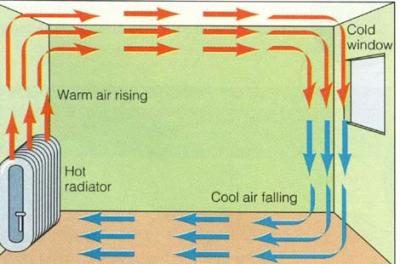
What’s the Real Problem?
Radon is an odorless, invisible, radioactive gas that comes from the natural decay of uranium found in nearly all soils. The gas can move through soil and become airborne. Every type of home is at risk including those with basements/crawl spaces or those built on concrete slabs.
How does radon move from the soil into a home? Most homes are under “negative air pressure” where the pressure inside the home is lower than outside. As a result, radon gas is pulled into the home through various routes such as:
- Cracks and gaps in foundation walls and concrete slabs
- Floor and wall joints
- Exposed soil in a sump or crawl space
- Pipe penetrations
Solving the Problem
Radon exposure is a serious health problem with a simple solution. To begin, conduct a short, low-cost screening test at a time of year when it is easy to keep windows and doors closed as much as possible for the test duration.
Radon levels are measured in number of ‘picocuries per liter’ (pCi/l). Very few homes will have a level of zero. Results less than 2 generally indicate a very low risk of lung cancer for non-smokers. (Smokers are at risk from any level of radon.)
If your home has a radon level of 2 or less, then doing a long-term test is recommended to be sure the level stays consistently low over time. If your first test shows a level between 2 and 8, conduct either another short-term or a long-term test to confirm. If results are consistently above 4, professional radon mitigation is recommended.
Next steps
Conduct a short-term radon test. Buy a test kit from a local home improvement store, or at a discount through the Minnesota Department of Health (Click here to purchase a Radon Kit)
Do a second short-term or long-term test if your first results are between 2 and 8 pCi/l.
If the test is a requirement for selling your home you must hire a certified radon-testing specialist to conduct it.
If buying a home insist on a radon test as part of the purchase agreement. (If the seller has tested for radon, MN State law requires them to disclose the test results.)
Hire a certified radon professional to install a radon mitigation system if test results are consistently 4 pCi/l or above
If you’re building a new home, install a passive radon mitigation system system that can be activated if elevated radon is discovered after construction is complete (This is part of MN building code).
Test your home for radon before remodeling and again after project completion.
Get Started
Contact a building performance specialist today. Enter your name, project details, or any questions you have below.

